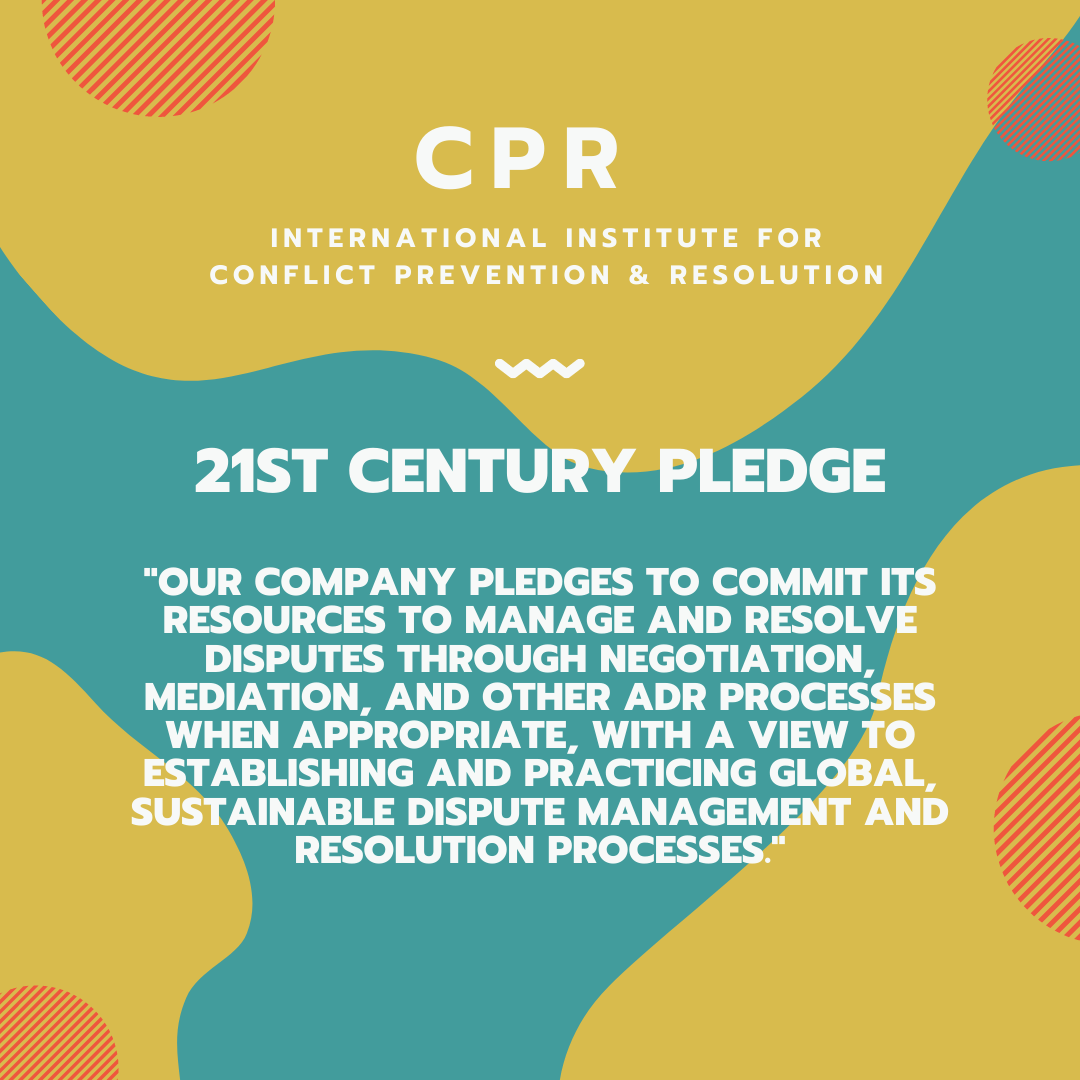Small Steps to ADR Commitment
For many years, the International Institute for Conflict Prevention and Resolution (CPR) has been persuading companies to adopt its 21st Century Pledge to use ADR wherever possible. CPR has made great progress in its steps to achieve ADR commitment with this initiative.

In my efforts to persuade the airline industry to adopt ADR, as described in last week’s post, this commitment is met with resistance. It seems too large of a step to promote within their organizations. It is easier and less risky to not recommend such dramatic change. I believe business leaders in other industries will react the same way. Another approach is necessary.
It is better to take many small steps in the right direction than to make a great leap forward only to stumble backward.
— Chinese proverb
Taking Smaller Steps.
Engaging in smaller steps is a solution to those uncomfortable with the commitment to ADR. One way is to find one context within their organization where ADR is in their best interest. For instance, one asks a corporate purchasing manager:
“Do you have any suppliers that would be particularly disruptive to replace?”
They might consider whether individual suppliers offer commodity goods, or customized high-quality inputs made to the company’s specifications. The former may be easy to replace — the latter, not so much. Images of disruption, high switching costs, and uncertain quality control create a CFO’s nightmare.
There are benefits of:
- relatively prompt decision,
- additional control of the process and outcome,
- flexibility in solutions, other than ‘winner-take-all,’
- and preservation of relationships found in non-litigation dispute resolution.
They become clear and easy to justify from a risk management perspective.
A similar analysis arises with the question: “Are there relationships where information we consider to be trade secrets would have to be exchanged in pre-trial discovery if a lawsuit were brought by either party?”
Litigating such cases are awkward because courts and trials are public affairs. Litigation that touches on trade secrets requires lengthy negotiations of complex protective orders. This identifies key components where the confidential nature of private mediation is recognized as a prudent risk mitigation choice.
Other Opportunities.
This also identifies where ADR practices have already, sometimes unknowingly, been adopted. Human resources departments often use excellent dispute resolution skills in their day-to-day. This recognition, with a thoughtful examination of where else it would be beneficial, gets the ball rolling toward the adoption of ADR.
Addressing Litigation Differently.
Each organization assesses its vulnerabilities to litigation differently. Factors may be concerns about reputation, protecting information, preserving relationships, or simply saving time and money. There may be conditions where an organization would prefer litigation.
For instance, an organization prefers to litigate key contract language used to gain the certainty of a judicial precedent. The key is to assess, in a balanced, open-minded manner, steps smaller than the CPR pledge. Once a business concludes that the case for ADR is undeniable, the discussion of the larger commitment gains momentum.






